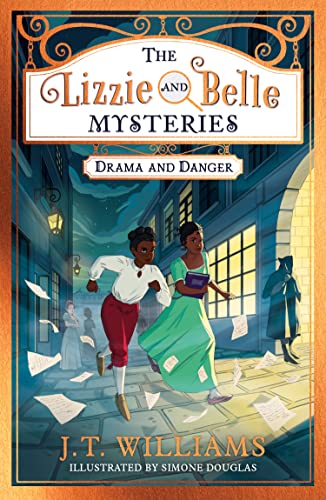The Lizzie and Belle Mysteries: Drama and Danger
In the prologue to this middle-grade mystery, twelve-year-old Lizzie is told an African proverb by her wise mother: give voice to the lions, not the hunter, when you tell the tale of a hunt. This is illuminating storytelling by lions, weaving fiction out of real lives from Black British history.
In 1777, Lizzie Sancho’s father Ignatius is an actor who runs a literary tea shop in Westminster. When he is almost killed by a falling chandelier on the opening night of his leading role in Othello at the Drury Lane theatre, Lizzie and her aristocratic new friend, Belle, set out to follow the clues and find who is responsible, pursuing witnesses and suspects. Through the use of authentic ephemera—playbills, pamphlets and newspapers, letters and case notes—the young reader is able to play detective on ‘The Othello Case’ along with Lizzie and Belle. We hear the stories of freed slaves, descendants of slaves and immigrants working for theatres and actors and lords, who organise themselves into freedom fighters against the ‘Vanishings,’ re-enslavement and the horror of the slave ship, Apollo, docked in the Thames.
Tension is supported by suspenseful breaks and a five-act structure. Historical detail is immersive and lets the reader experience 18th-century norms and inequalities naturally, and there are gentle lessons on the social status of women. This balance between information and storytelling will speak to the young reader’s intelligence and imagination. Curious readers will discover a great deal about 18th-century London life, about the coffee house, the theatre and the culture of letters. There is plenty here to fascinate and to show where Black historical identity can be found. Highly recommended.










